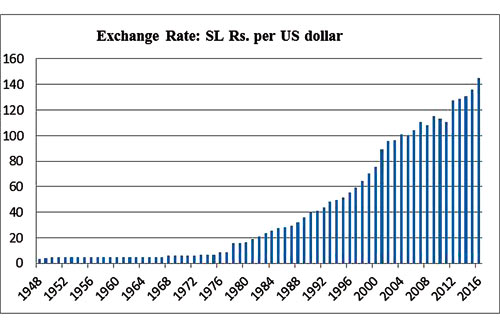By Duruthu Edirimuni Chandrasekera
The Colombo Stock Exchange (CSE) has embarked on a cost effective marketing drive with plans to rope in foreign governments and (local/foreign) firms to sponsor roadshows in those countries, a top official says. ”In a cost saving measure, the CSE is planning to get other countries/institutions to sponsor roadshows in different countries,” Vajira Kulatilleke, Chairman CSE told the Business Times. He added that with the change of government, perceptions/attitudes of certain nations towards Sri Lanka have changed (for the better) and they are trying to capitalise on this change in their stance. While acknowledging that bad times won’t last, he said now (the CSE is on a bearish momentum) they are gearing and preparing for the next cycle when there’ll be good times.
“We’re trying (till then) to develop institutions and stakeholders in the market,” he said. In this respect, the CSE is conducting training on various aspects – especially on research. “As these are times to improve ourselves, we thought of doing these things,” Mr. Kulatilleke said. According to him, an area that the CSE is deficient in is risk management. “The rest of the world has moved up in this respect. Now is the time to catch-up,” he said adding that by the first quarter of 2017 the Central Counterparty (CCP), which is an entity that will take up the risk of transaction in the market in the event of a clearing and settlement failure, will be ready. He added that when these systems are in place, new fund managers will come into the country. “Some fund managers are ‘sarcastic’ when they realise that Sri Lanka doesn’t have CCP.”
He added that currently sentiments aren’t good as people had expected much faster implementation after the government changed. Acceleration in construction sector alongside other such (visible) activity will do the trick of changing the sentiment, he added. He added this year will see some six initial public offers. The CSE is bringing in software this year to enable Repurchase Agreement (Repo) facility on corporate debt (i.e. debentures) which will assist more liquidity at the CSE. “This will be done in the third quarter,” Mr. Kulatilleke said. He added that the CSE is trying to forge ahead with the Small and Medium Enterprise (SME) Board and that the BOI Board which was proposed in 2014 has been scrapped as it isn’t viable. The dollar denominated board, enabling foreign firms to trade on CSE is also on track and the CSE aims to conduct a roadshow in Male soon to get some Maldivian firms to list on the CSE under this board, he added.
The Colombo Stock Exchange (CSE) has embarked on a cost effective marketing drive with plans to rope in foreign governments and (local/foreign) firms to sponsor roadshows in those countries, a top official says. ”In a cost saving measure, the CSE is planning to get other countries/institutions to sponsor roadshows in different countries,” Vajira Kulatilleke, Chairman CSE told the Business Times. He added that with the change of government, perceptions/attitudes of certain nations towards Sri Lanka have changed (for the better) and they are trying to capitalise on this change in their stance. While acknowledging that bad times won’t last, he said now (the CSE is on a bearish momentum) they are gearing and preparing for the next cycle when there’ll be good times.
“We’re trying (till then) to develop institutions and stakeholders in the market,” he said. In this respect, the CSE is conducting training on various aspects – especially on research. “As these are times to improve ourselves, we thought of doing these things,” Mr. Kulatilleke said. According to him, an area that the CSE is deficient in is risk management. “The rest of the world has moved up in this respect. Now is the time to catch-up,” he said adding that by the first quarter of 2017 the Central Counterparty (CCP), which is an entity that will take up the risk of transaction in the market in the event of a clearing and settlement failure, will be ready. He added that when these systems are in place, new fund managers will come into the country. “Some fund managers are ‘sarcastic’ when they realise that Sri Lanka doesn’t have CCP.”
He added that currently sentiments aren’t good as people had expected much faster implementation after the government changed. Acceleration in construction sector alongside other such (visible) activity will do the trick of changing the sentiment, he added. He added this year will see some six initial public offers. The CSE is bringing in software this year to enable Repurchase Agreement (Repo) facility on corporate debt (i.e. debentures) which will assist more liquidity at the CSE. “This will be done in the third quarter,” Mr. Kulatilleke said. He added that the CSE is trying to forge ahead with the Small and Medium Enterprise (SME) Board and that the BOI Board which was proposed in 2014 has been scrapped as it isn’t viable. The dollar denominated board, enabling foreign firms to trade on CSE is also on track and the CSE aims to conduct a roadshow in Male soon to get some Maldivian firms to list on the CSE under this board, he added.
www.sundaytimes.lk

